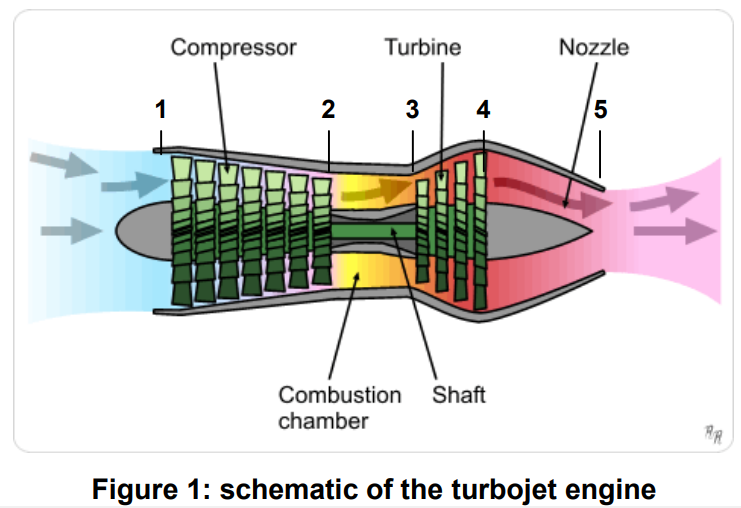In the turbojet lab, a model aircraft engine runs on a pure turbojet cycle, as shown in Fig. 1. Using the conditions given in Table 1 and the data recorded in Table 2, answer the following questions. Note the turbojet is not equipped with a diffuser. The measured turbine outlet temperature (state 4) is a stagnation quantity. The compressor pressure ratio, P2/P1, is a function of the engine speed, ?, as expressed as 



*Load cell voltage (V) is converted to thrust (N) at 1:1 ratio.
It asks for : T-s diagram of the cycle.
the turbine-inlet temperature, T3;
the exhaust velocity, v5;
the air flow rate (Note: the measured thrust is the output of an actual cycle and thus cannot be used for deriving the equations. )
Calculate the thrust produced by the ideal turbojet cycle; cycle thermal efficiency (ratio of the useful output and the required input) and plot it versus engine speed;
temperature and pressure at each state from 1 to 5.
Attachments:
media-1bc-1bc1f9d8-0fa8-41e3-a397-ddc6fb353a24-phpkmlvl8_4778407110857705344.png
media-359-359812ff-2612-43e5-ace6-b405d1683dc1-phptxdoc9_5058853090383936679.png
media-b00-b0039da7-6b15-4007-a93c-175029913473-phpqpqbrl_4844470037646051102.png
media-d30-d3031dad-d7ca-418e-abe4-88a9e94622f0-phppvhv3a_5008674871341796930.png